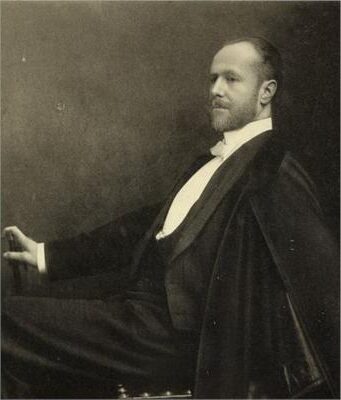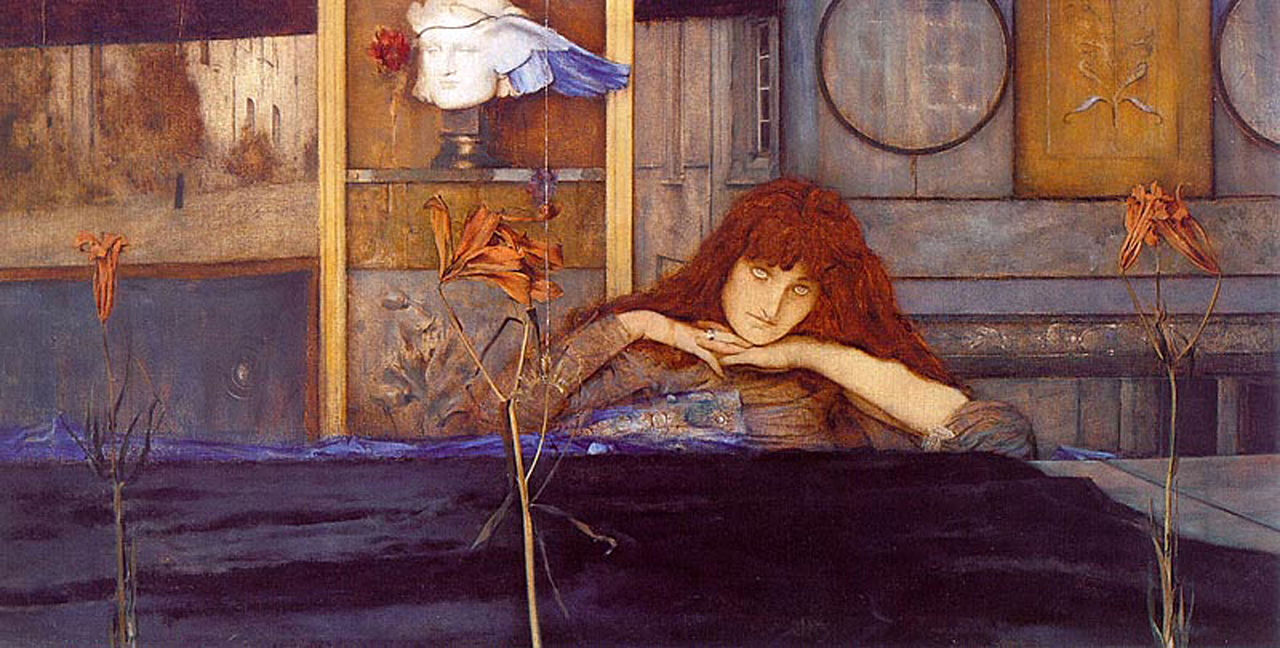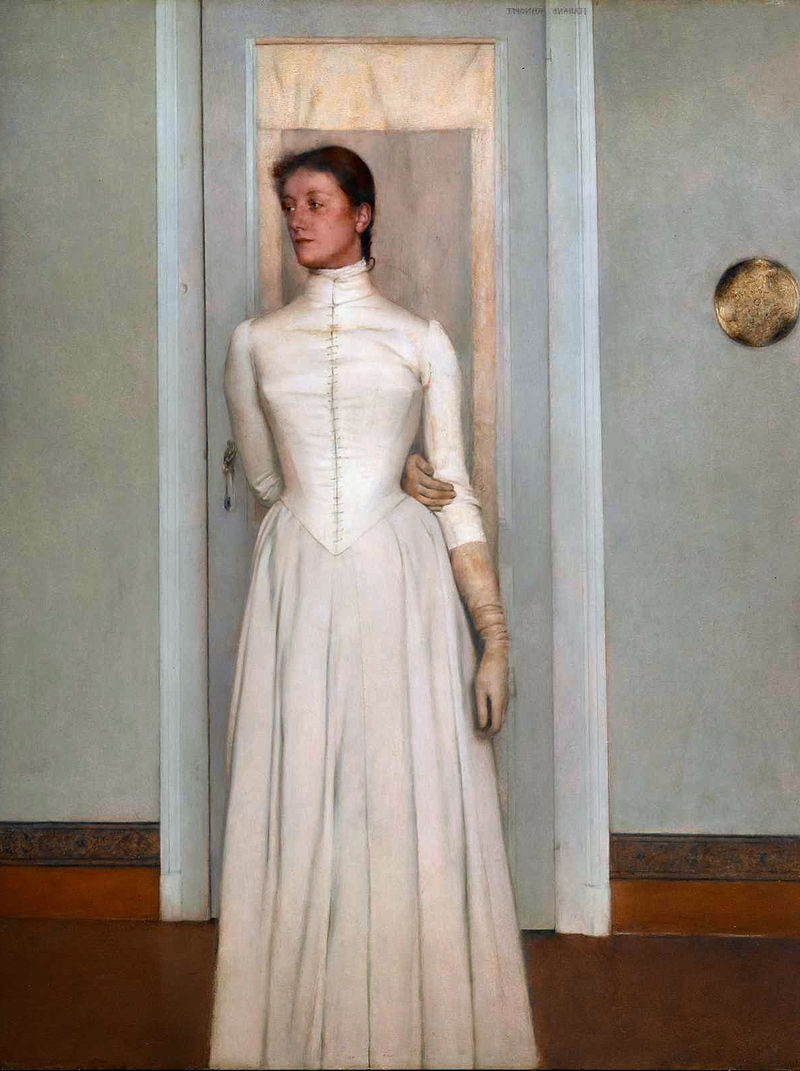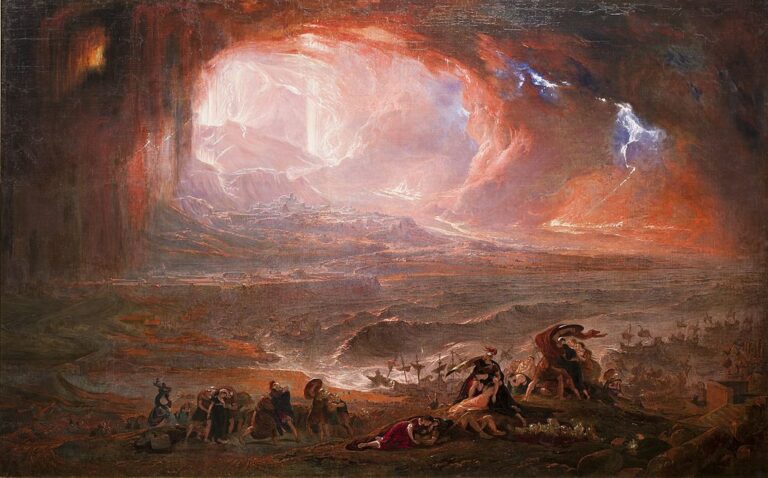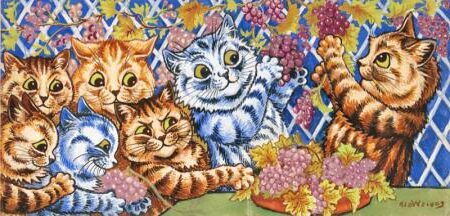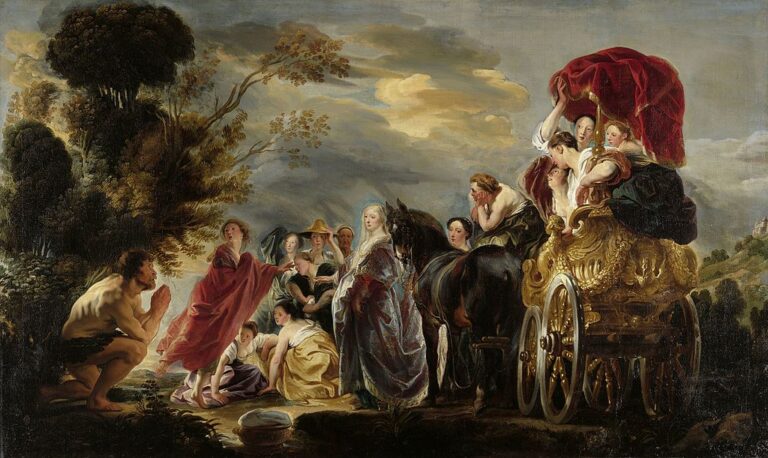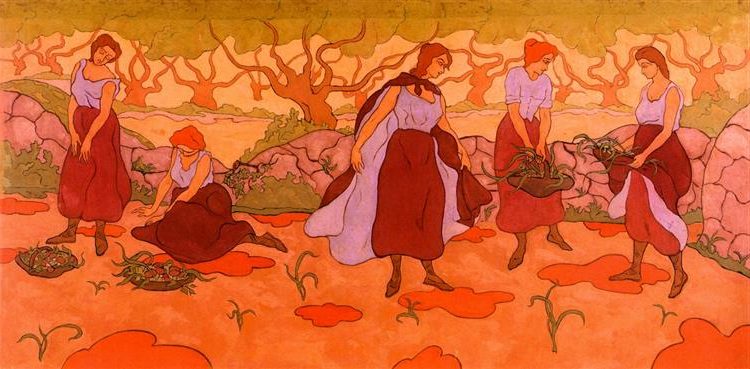Fernand Khnopff: Painter of Symbolist Masterpieces in Belle Époque Belgium
Born: 12 September 1858, Grembergen, Belgium
Death: 12 November 1921, Brussels, Belgium
Art Movement: Symbolism
Nationality: Belgian
Institution: Académie Royale des Beaux-Arts
Fernand Khnopff: Painter of Symbolist Masterpieces in Belle Époque Belgium
Fernand Khnopff: Origins and Artistic Beginnings
Fernand Khnopff was a Belgian artist known for his work in painting, sculpture, and photography. He started on a different path but found his true calling in art.
Early Life and Belgian Roots
Fernand Edmond Jean Marie Khnopff was born on September 12, 1858, in Grembergen, a town in Flanders, Belgium. He came from a well-off family with Portuguese roots. His father worked as a legal official.
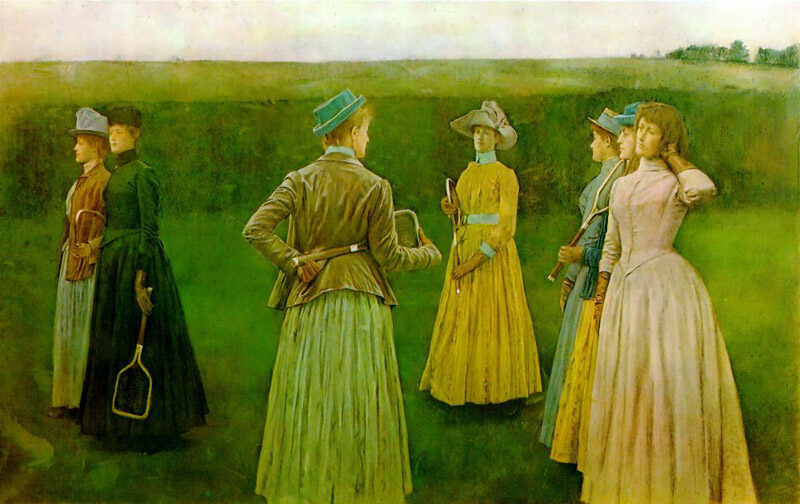
Memories or Lawn Tennis (1889) by Fernand Khnopff
Khnopff grew up in Bruges until age 11. The city’s medieval beauty left a big impact on him. In 1870, his family moved to Brussels. This move opened up new chances for young Fernand’s education and future career.
Academic Pursuits and Transition to Art
Khnopff first studied law at the Free University of Brussels. But he soon found that law did not interest him. He left his studies to focus on art instead.
In 1876, Khnopff signed up for drawing classes at the Académie Royale des Beaux-Arts in Brussels. This choice marked the start of his art career.
Influences and Early Work
Khnopff’s art was shaped by many things. The beauty of Bruges stuck with him. He was also moved by the work of the Pre-Raphaelites, a group of English painters.
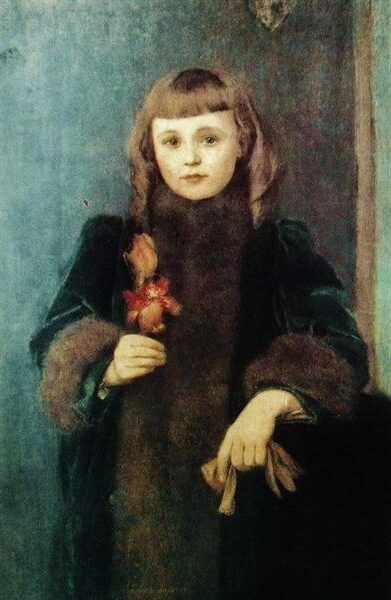

His early paintings showed great skill in realism. But they also had a dreamy feel that set them apart. Khnopff liked to paint portraits and scenes with a mysterious mood.
In the 1880s, he began to make a name for himself. His work caught the eye of other artists and critics. They saw something new and exciting in his style.
Artistic Evolution and Major Works
Fernand Khnopff’s artistic journey spanned decades, marked by his unique symbolist style and influential works. He developed a distinctive approach that blended realism with dreamlike elements, gaining recognition in Belgium and beyond.
Symbolism and Artistic Style
Khnopff emerged as a leading Belgian Symbolist painter in the 1880s. His style combined precise realism with mysterious, otherworldly atmospheres. He often used muted colors and created enigmatic scenes that invited viewers to interpret their meanings.
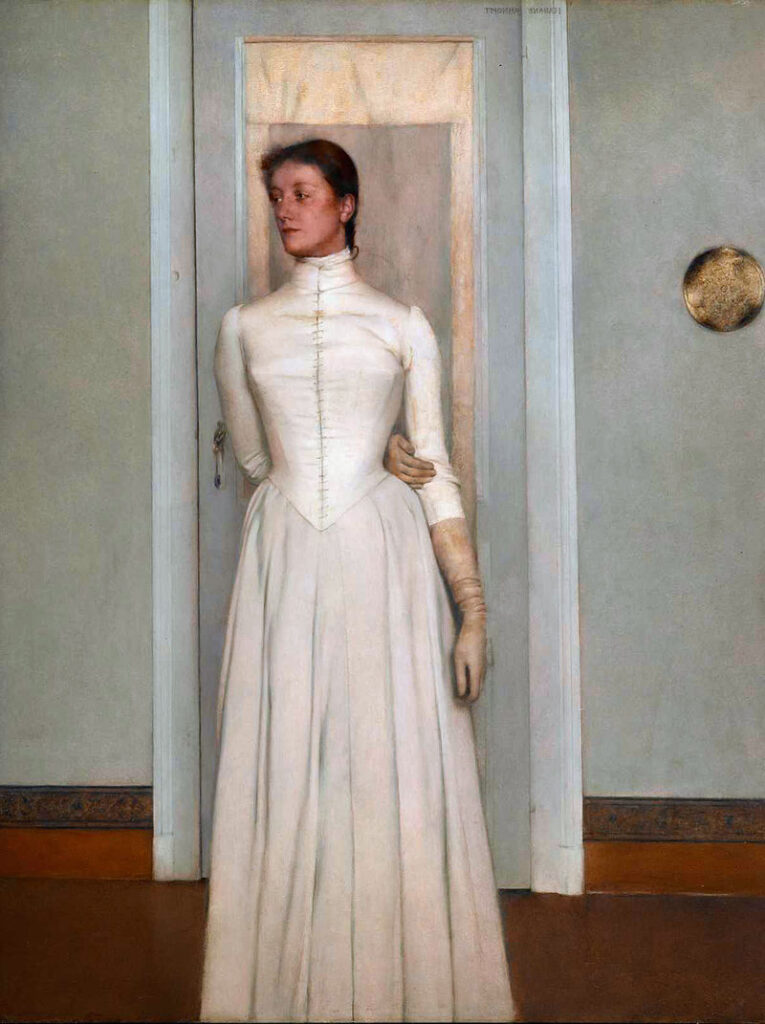
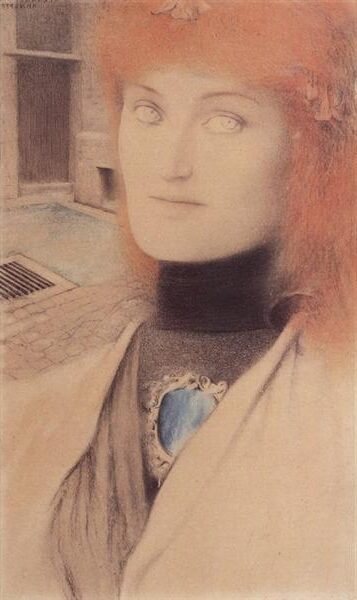
Khnopff’s work explored themes of identity, memory, and the subconscious. He frequently depicted solitary figures in contemplative poses or dreamlike landscapes. His paintings often featured androgynous characters and sphinxes, symbols that became hallmarks of his artistic vision.
Notable Paintings and Exhibitions
Some of Khnopff’s most famous works include:
- “I Lock My Door Upon Myself” (1891)
- “Who Shall Deliver Me?” (1891)
- “The Caresses” (1896)
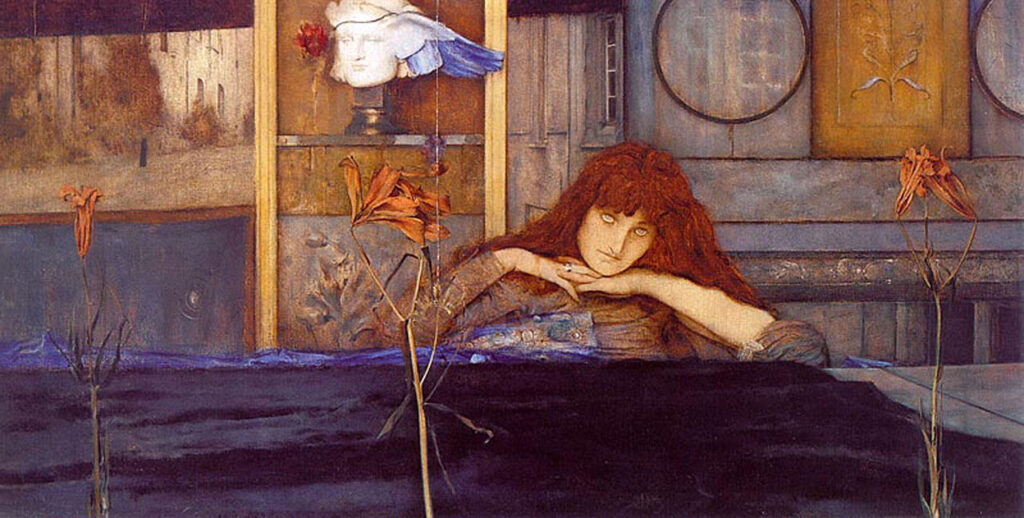
I Lock the Door Upon Myself (1891) by Fernand Khnopff
These paintings showcase his skill in creating mysterious, symbolic images. “The Caresses” depicts a sphinx-like creature embracing a young Oedipus figure, exemplifying Khnopff’s fascination with mythology and the subconscious.
Khnopff exhibited with Les XX, an influential Belgian avant-garde group, from 1884 to 1893. His work gained international recognition through exhibitions in Paris and Vienna. The Vienna Secession, including Gustav Klimt, admired Khnopff’s art.
Collaborations and Artistic Network
Khnopff’s artistic circle included notable figures like James Ensor and Georges Rodenbach. He collaborated with writers and created illustrations for literary works. His friendship with Joséphin Péladan, a French novelist and occultist, influenced his interest in mysticism and symbolism.
Khnopff’s connections extended to the music world. He designed posters for concerts and created portraits of musicians. His network helped spread his artistic influence across Europe, cementing his place in the Symbolist movement.
Contributions and Influence
Fernand Khnopff made big impacts on art in the late 1800s and early 1900s. His unique style and ideas shaped the Symbolist movement and inspired other artists.
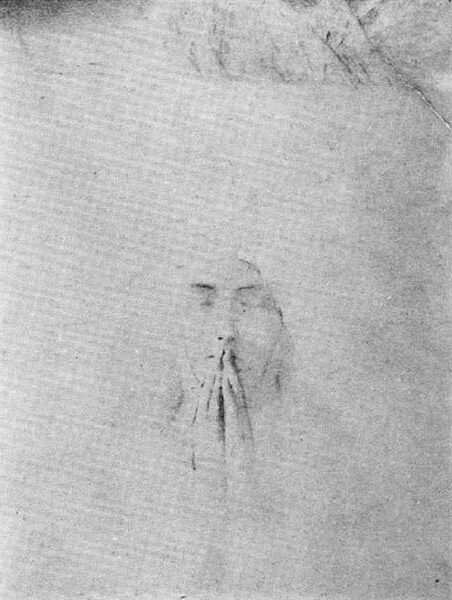

Prominent Themes and Cultural Impact
Khnopff’s art often showed mysterious women, dream-like scenes, and hidden meanings. He painted portraits, landscapes, and symbolic works. His style mixed realism with fantasy.
Khnopff was inspired by writers like Baudelaire and Flaubert. Their ideas about beauty and mystery shaped his art. He also admired painters Gustave Moreau and Edward Burne-Jones.
The artist’s work dealt with themes like:
- Identity
- Memory
- Dreams
- Isolation
His art connected with people’s feelings in a changing world. It spoke to their hopes and fears as society changed quickly.
Legacy and Recognition
Khnopff’s influence spread beyond Belgium. He inspired the Vienna Secession, a group of modern artists in Austria. Gustav Klimt and other Secession members admired his work.


Khnopff was more than a painter. He also:
- Took photos
- Made sculptures
- Wrote about art
His talents in many areas helped spread his ideas. Today, museums around the world display his art. Experts see him as a key figure in Symbolism.
Khnopff’s unique vision still interests art lovers today. His mix of real and imaginary elements created a style all his own. This style continues to spark curiosity and study among artists and scholars.
Frequently Asked Questions
Fernand Khnopff was a key figure in Belgian Symbolism. His art blended reality and fantasy, often featuring mystical themes and dreamlike imagery.
What are the characteristics of Fernand Khnopff’s artistic style?
Khnopff’s style mixed realism with symbolism. He used soft, muted colors and precise brush strokes.
His paintings often had a dreamy, mysterious feel. Khnopff focused on portraits, landscapes, and symbolic scenes.
He paid great attention to detail, creating smooth and polished surfaces in his works.
Can you explain the symbolism found in Fernand Khnopff’s works?
Khnopff used symbols to explore deep ideas and emotions. He often included sphinxes, which represented mystery and wisdom.
Mirrors appeared in many paintings, showing self-reflection and identity. Masks were another common symbol, hiding true feelings or personalities.
Water was used to show the line between reality and dreams.
What was Fernand Khnopff’s contribution to the Symbolist movement?
Khnopff helped shape Belgian Symbolism. He brought a unique mix of realism and fantasy to the movement.
His work inspired many other artists in Belgium and beyond. Khnopff’s art pushed the limits of what Symbolism could be.
He was known for his skill in different art forms, including painting, sculpture, and photography.
How did Fernand Khnopff’s artwork reflect his views on society and culture?
Khnopff’s art often showed a world apart from everyday life. He created scenes that were beautiful but also strange and unsettling.
His work hinted at hidden truths beneath the surface of society. Khnopff painted many portraits of upper-class people, showing their public faces and private thoughts.
He was interested in the clash between old and new ideas in his time.
Which museums house the most significant collections of Fernand Khnopff’s works?
The Royal Museums of Fine Arts of Belgium in Brussels has a large collection of Khnopff’s art. This includes some of his most famous paintings.
The Museum of Modern Art in New York also owns important pieces by Khnopff. Several museums in Europe, like the Musée d’Orsay in Paris, display his works.
What influence did music, particularly Schumann, have on Fernand Khnopff’s art?
Music played a big role in Khnopff’s creative process. He was especially fond of Schumann’s compositions.
Khnopff tried to capture the mood and feeling of music in his paintings. Some of his works were direct responses to specific musical pieces.
He believed that art and music could express similar ideas in different ways.


